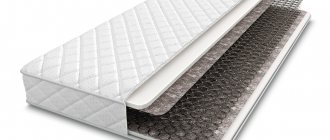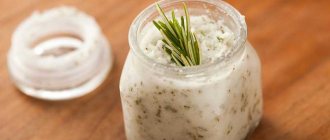The word “soda” refers to several complex chemical substances. Food, drinking, sodium bicarbonate, chemical formula NaHCO3, acidic sodium salt of carbonic acid. Calcined, linen, sodium carbonate, chemical formula Na2CO3, sodium salt of carbonic acid.
Caustic, sodium hydroxide, chemical formula NaOH. There are also some technical types of soda - crystalline hydrates containing sodium carbonate, and various brands of caustic soda. The above compounds have different properties and chemical formulas. But they all dissolve well in water, and their solutions have a more or less pronounced alkaline reaction. Let's take a closer look at them.
The difference between sour salt and medium salt
Carbonic acid forms two groups of salts - carbonates (medium) and bicarbonates (acidic). The trivial name for carbonates - soda - appeared in ancient times. It is necessary to distinguish between medium and acid salts by names, formulas and properties. Na2CO3 - sodium carbonate, disodium carbonate, washing soda ash. Serves as a raw material for the production of glass, paper, soap, and is used as a detergent.
NaHCO3 - sodium bicarbonate. The composition suggests that the substance is a monosodium salt of carbonic acid. This compound is distinguished by the presence of two different positive ions - Na+ and H+. Externally, the crystalline white substances are similar, they are difficult to distinguish from each other.
The substance NaHCO3 is considered baking soda not because it is consumed internally to quench thirst. Although this substance can be used to prepare a fizzy drink. A solution of this bicarbonate is taken orally in case of increased acidity of gastric juice. In this case, excess H+ protons are neutralized, which irritate the walls of the stomach, causing pain and burning.
What is sodium carbonate
Sodium carbonate is a compound belonging to a class of inorganic substances. Externally, the substance is a homogeneous white or white-gray powder; it can take the form of colorless crystals. The compound is perfectly soluble in ordinary water at room temperature and in polyhydric alcohols. Under the influence of open air, sodium carbonate easily absorbs water vapor; with a long stay in such an environment, the process of clumping begins: individual grains stick together, the powder changes its appearance and darkens.
Until the century before last, the substance was obtained through the processing of seaweed and plants growing near water sources, the basis for which was saline soil. In the modern world, the technology for producing soda ash has changed - in the mid-19th century, the Solvay method was introduced, which significantly simplified the process of extracting the substance.
Soda Ash
Sodium carbonate is widely used in various industries: chemical synthesis, oil refining, metallurgy, production of glass, cement, textiles, paper, detergents. In everyday life it is used to remove stubborn stains from various surfaces.
Physical properties of baking soda
Bicarbonate is white monoclinic crystals. This compound contains atoms of sodium (Na), hydrogen (H), carbon (C) and oxygen. The density of the substance is 2.16 g/cm3. Melting point - 50–60 °C. Sodium bicarbonate is a milky-white powder, a solid, fine-crystalline compound, soluble in water. Baking soda does not burn, and when heated above 70 ° C, it decomposes into sodium carbonate, carbon dioxide and water. In production conditions, granulated bicarbonate is more often used.
Soda products
1. Characteristics of baking soda ( NaHCO3). Chemical properties, production methods and applications
2. Soda ash ( Na2СO3) . Production methods. Main types and applications
3. Caustic soda (NaOH). Methods of preparation, brands and use
4.Safety precautions for caustic soda production
In industry, trade and in everyday life, several products are found under the name soda:
Ø soda ash - anhydrous sodium carbonate Na2СO3;
Ø bicarbonate of soda - sodium bicarbonate NaHCO3 , often also called baking soda
;
Ø crystalline soda Na2СO3•10Н2O and Na2СO3•Н2O;
Ø caustic soda, or caustic soda NaOH.
In nature, soda is found in solid form in small deposits in the composition of the mineral trona Na2CO3 NaHCO3•2H2O, in the form of a solution - in the water of some soda lakes and alkaline mineral springs and in the ashes of some plants. Until the beginning of the 19th century. Natural soda was used almost exclusively, but with the increase in soda consumption, it became necessary to produce soda on a large scale artificially.
1. Characteristics of baking soda. Chemical properties, production methods and applications
Sodium bicarbonate NaHCO3 is an acidic sodium salt of carbonic acid. Molecular mass (according to international atomic masses 1971) - 84.00.
Reaction with acids.
Sodium bicarbonate reacts with acids to form a salt and carbonic acid, which immediately breaks down into carbon dioxide and water:
NaHCO3 + HCl → NaCl +Na2CO3
H2CO3 → H2O + CO2↑
Soda dissolves well in water. An aqueous solution of baking soda has a slightly alkaline reaction. The fizzing sound of soda is the result of the release of carbon dioxide CO2 as a result of chemical reactions.
Thermal decomposition.
At a temperature of 60° C, sodium bicarbonate decomposes into sodium carbonate, carbon dioxide and water (the decomposition process is most effective at 200° C):
2NaHCO3 → Na2CO3 + H2O + CO2↑
With further heating to 1000° C (for example, when extinguishing a fire with powder systems), the resulting sodium carbonate decomposes into carbon dioxide and sodium oxide:
Na2CO3 → Na2O + CO2.
Drinking soda technology. Equimolar amounts of gaseous ammonia (NH3) and carbon dioxide (CO2) are passed into a saturated solution of sodium chloride (NaCl), that is, ammonium bicarbonate NH 4HCO3 is introduced:
NH3 + CO2 + H2O + NaCl → NaHCO3 + NH4Cl.
The precipitated residue of slightly soluble (9.6 g per 100 g of water at 20 ° C) sodium bicarbonate is filtered and calcined (dehydrated) by heating to 140 - 160 ° C, during which it turns into sodium carbonate:
2NaHCO3 → (t) Na 2CO3 + CO2↑ + H2O
For the production of purified sodium bicarbonate, so-called “dry”
and “
wet”
methods. The process is based on the usual carbonization reaction, i.e. saturation of the solution with carbon dioxide. Recrystallization occurs. The methods differ in the preparation of the solution.
With the dry method
ready-made soda ash is taken and dissolved with water, and when wet, technical bicarbonate is used. A soda solution for carbonation is obtained by dissolving solid technical soda in water, which is formed during the calcination of raw bicarbonate (this process is called the “dry” method):
Na2CO3(solid) + CO2(g) + H2O(liquid) ↔ 2NaHCO3(solid) + 52.4 kJ (+ 12.5 kcal), or by the decomposition of sodium bicarbonate in an aqueous medium when heated (“wet” method), which is called decarbonization, according to the reaction:
2NaHCO3(r.) ↔ Na2CO3(r.) + CO2(g) + H2O(steam) - 20.6 kJ (- 4.9 kcal).
In 2008, the production of “Extra” table salt began, including iodized salt and with an anti-caking additive. Salt is obtained from Azov seawater by natural evaporation in the Sivash deposit. The resulting raw brine undergoes two stages of purification from calcium and magnesium salts, then it is sent for evaporation, centrifugation of the salt suspension and drying of the wet salt. After drying, the salt is packaged in bags of 25 and 50 kg.
Sodium bicarbonate (bicarbonate) is used in the chemical, food, light, medical, pharmaceutical industries, non-ferrous metallurgy, and is supplied to retail.
Registered as a food additive E500.
Widely used in:
Ø chemical industry - for the production of dyes, foam plastics and other organic products, fluoride reagents, household chemicals, fillers in fire extinguishers, for separating carbon dioxide, hydrogen sulfide from gas mixtures (gas is absorbed in a bicarbonate solution at elevated pressure and low temperature, the solution is reduced at heating and reduced pressure);
Ø light industry - in the production of sole rubber and artificial leather, tanning (tanning and neutralizing leather);
Ø textile industry (finishing of silk and cotton fabrics). The use of sodium bicarbonate in the production of rubber products is also due to the release of CO2 when heated, which helps give the rubber the necessary porous structure.
Ø food industry - bakery, confectionery production, preparation of drinks;
Ø medical industry - for the preparation of injection solutions, anti-tuberculosis drugs and antibiotics;
Ø metallurgy - during the precipitation of rare earth metals and ore flotation
The main use of baking soda is cooking. It is used primarily as a main or additional leavening agent in baking (as it releases carbon dioxide when heated), in the manufacture of confectionery products, in the production of carbonated drinks and artificial mineral waters, alone or as part of complex leavening agents (for example, baking powder, mixed with ammonium carbonate), for example, in biscuit and shortbread dough. This is due to the ease of its decomposition at 50-100°C.
Soda has taken the place of the alkaline agent so firmly that nothing has yet been able to move it from this position. Baking soda can act as a leavening agent in two ways. Firstly, it decomposes when heated according to the reaction:
2NaHCO3 (soda) → Na2CO3 (salt) + H2O (water) + CO2 (carbon dioxide).
And in this case, if you add an excessive amount of soda to the shortbread dough, in a short baking time it may not have time to thermally decompose without leaving a residue and the cookies or cake will get an unpleasant “soda” taste.
1. Characteristics of baking soda ( NaHCO3). Chemical properties, production methods and applications
2. Soda ash ( Na2СO3) . Production methods. Main types and applications
3. Caustic soda (NaOH). Methods of preparation, brands and use
4.Safety precautions for caustic soda production
In industry, trade and in everyday life, several products are found under the name soda:
Ø soda ash - anhydrous sodium carbonate Na2СO3;
Ø bicarbonate of soda - sodium bicarbonate NaHCO3 , often also called baking soda
;
Ø crystalline soda Na2СO3•10Н2O and Na2СO3•Н2O;
Ø caustic soda, or caustic soda NaOH.
In nature, soda is found in solid form in small deposits in the composition of the mineral trona Na2CO3 NaHCO3•2H2O, in the form of a solution - in the water of some soda lakes and alkaline mineral springs and in the ashes of some plants. Until the beginning of the 19th century. Natural soda was used almost exclusively, but with the increase in soda consumption, it became necessary to produce soda on a large scale artificially.
1. Characteristics of baking soda. Chemical properties, production methods and applications
Sodium bicarbonate NaHCO3 is an acidic sodium salt of carbonic acid. Molecular mass (according to international atomic masses 1971) - 84.00.
Reaction with acids.
Sodium bicarbonate reacts with acids to form a salt and carbonic acid, which immediately breaks down into carbon dioxide and water:
NaHCO3 + HCl → NaCl +Na2CO3
H2CO3 → H2O + CO2↑
Soda dissolves well in water. An aqueous solution of baking soda has a slightly alkaline reaction. The fizzing sound of soda is the result of the release of carbon dioxide CO2 as a result of chemical reactions.
Thermal decomposition.
At a temperature of 60° C, sodium bicarbonate decomposes into sodium carbonate, carbon dioxide and water (the decomposition process is most effective at 200° C):
2NaHCO3 → Na2CO3 + H2O + CO2↑
With further heating to 1000° C (for example, when extinguishing a fire with powder systems), the resulting sodium carbonate decomposes into carbon dioxide and sodium oxide:
Na2CO3 → Na2O + CO2.
Drinking soda technology. Equimolar amounts of gaseous ammonia (NH3) and carbon dioxide (CO2) are passed into a saturated solution of sodium chloride (NaCl), that is, ammonium bicarbonate NH 4HCO3 is introduced:
NH3 + CO2 + H2O + NaCl → NaHCO3 + NH4Cl.
The precipitated residue of slightly soluble (9.6 g per 100 g of water at 20 ° C) sodium bicarbonate is filtered and calcined (dehydrated) by heating to 140 - 160 ° C, during which it turns into sodium carbonate:
2NaHCO3 → (t) Na 2CO3 + CO2↑ + H2O
For the production of purified sodium bicarbonate, so-called “dry”
and “
wet”
methods. The process is based on the usual carbonization reaction, i.e. saturation of the solution with carbon dioxide. Recrystallization occurs. The methods differ in the preparation of the solution.
With the dry method
ready-made soda ash is taken and dissolved with water, and when wet, technical bicarbonate is used. A soda solution for carbonation is obtained by dissolving solid technical soda in water, which is formed during the calcination of raw bicarbonate (this process is called the “dry” method):
Na2CO3(solid) + CO2(g) + H2O(liquid) ↔ 2NaHCO3(solid) + 52.4 kJ (+ 12.5 kcal), or by the decomposition of sodium bicarbonate in an aqueous medium when heated (“wet” method), which is called decarbonization, according to the reaction:
2NaHCO3(r.) ↔ Na2CO3(r.) + CO2(g) + H2O(steam) - 20.6 kJ (- 4.9 kcal).
In 2008, the production of “Extra” table salt began, including iodized salt and with an anti-caking additive. Salt is obtained from Azov seawater by natural evaporation in the Sivash deposit. The resulting raw brine undergoes two stages of purification from calcium and magnesium salts, then it is sent for evaporation, centrifugation of the salt suspension and drying of the wet salt. After drying, the salt is packaged in bags of 25 and 50 kg.
Sodium bicarbonate (bicarbonate) is used in the chemical, food, light, medical, pharmaceutical industries, non-ferrous metallurgy, and is supplied to retail.
Registered as a food additive E500.
Widely used in:
Ø chemical industry - for the production of dyes, foam plastics and other organic products, fluoride reagents, household chemicals, fillers in fire extinguishers, for separating carbon dioxide, hydrogen sulfide from gas mixtures (gas is absorbed in a bicarbonate solution at elevated pressure and low temperature, the solution is reduced at heating and reduced pressure);
Ø light industry - in the production of sole rubber and artificial leather, tanning (tanning and neutralizing leather);
Ø textile industry (finishing of silk and cotton fabrics). The use of sodium bicarbonate in the production of rubber products is also due to the release of CO2 when heated, which helps give the rubber the necessary porous structure.
Ø food industry - bakery, confectionery production, preparation of drinks;
Ø medical industry - for the preparation of injection solutions, anti-tuberculosis drugs and antibiotics;
Ø metallurgy - during the precipitation of rare earth metals and ore flotation
The main use of baking soda is cooking. It is used primarily as a main or additional leavening agent in baking (as it releases carbon dioxide when heated), in the manufacture of confectionery products, in the production of carbonated drinks and artificial mineral waters, alone or as part of complex leavening agents (for example, baking powder, mixed with ammonium carbonate), for example, in biscuit and shortbread dough. This is due to the ease of its decomposition at 50-100°C.
Soda has taken the place of the alkaline agent so firmly that nothing has yet been able to move it from this position. Baking soda can act as a leavening agent in two ways. Firstly, it decomposes when heated according to the reaction:
2NaHCO3 (soda) → Na2CO3 (salt) + H2O (water) + CO2 (carbon dioxide).
And in this case, if you add an excessive amount of soda to the shortbread dough, in a short baking time it may not have time to thermally decompose without leaving a residue and the cookies or cake will get an unpleasant “soda” taste.
Safety of baking soda for humans
The compound is odorless and its taste is bitter and salty. However, it is not recommended to smell or taste the substance. Inhaling sodium bicarbonate may cause sneezing and coughing. One use is based on baking soda's ability to neutralize odors. The powder can be used to treat sports shoes to get rid of unpleasant odors.
Baking soda (sodium bicarbonate) is a harmless substance in contact with the skin, but in solid form it can cause irritation to the mucous membrane of the eyes and esophagus. In low concentrations, the solution is non-toxic and can be taken orally.
Type of food additive, hazard and toxicity class, storage conditions
The following compounds fall into this category:
- sodium carbonate E 500(i);
- sodium bicarbonate E 500(ii);
- mixture of sodium carbonate and hydrogen carbonate E 500(iii).
The purpose of additives of this type is to facilitate the technological process of food production.
The described compounds belong to hazard class 3 and are non-toxic. Soda is highly hygroscopic, so it is important to store it in a hermetically sealed container in a dry place. After opening the package, it is recommended to limit contact with moist air and water.
Sodium bicarbonate: compound formula
The gross formula CHNaO3 is rarely found in equations of chemical reactions. The fact is that it does not reflect the connection between the particles that form sodium bicarbonate. The formula commonly used to characterize the physical and chemical properties of a substance is NaHCO3. The relative arrangement of atoms is reflected by the ball-and-stick model of the molecule:
If you find out from the periodic table the atomic masses of sodium, oxygen, carbon and hydrogen. then you can calculate the molar mass of the substance sodium bicarbonate (formula NaHCO3): Ar(Na) - 23; Ar(O) - 16; Ar(C) - 12; Ar(H) - 1; M (CHNaO3) = 84 g/mol.
Exchange reaction with other salts
An aqueous solution of sodium bicarbonate enters into ion exchange reactions with other salts, provided that one of the newly formed substances is insoluble; or a gas is formed, which is removed from the reaction sphere. When interacting with calcium chloride, as shown in the diagram below, both a white precipitate of calcium carbonate and carbon dioxide are obtained. Sodium and chlorine ions remain in the solution. Molecular equation of the reaction:
Interaction of baking soda with acids
Sodium bicarbonate reacts with acids. The ion exchange reaction is accompanied by the formation of salt and weak carbonic acid. At the moment of receipt, it decomposes into water and carbon dioxide (evaporates).
The walls of the human stomach produce hydrochloric acid, which exists in the form of H+ and Cl– ions. If you take sodium bicarbonate orally, reactions occur in a solution of gastric juice with the participation of ions: NaHCO3 = Na+ + HCO3–; HCl = H+ + Cl–; H2O ↔ H+ + OH–; HCO3– + H+ = H2O + CO2↑. Doctors do not recommend constantly using sodium bicarbonate in case of increased stomach acidity. The instructions for the drugs list various side effects of daily and long-term use of baking soda:
- increased blood pressure;
- belching, nausea and vomiting;
- anxiety, poor sleep;
- decreased appetite;
- stomach ache.
Getting Baking Soda
In the laboratory, sodium bicarbonate can be obtained from soda ash. The same method was used previously in chemical production. The modern industrial method is based on the interaction of ammonia with carbon dioxide and the poor solubility of baking soda in cold water. Ammonia and carbon dioxide (carbon dioxide) are passed through the sodium chloride solution. Ammonium chloride and sodium bicarbonate solution are formed. When cooled, the solubility of baking soda decreases, then the substance is easily separated by filtration.
History of creation
Baking soda has been used in baking since ancient times. It was found by archaeologists during excavations of caves of the 1st-2nd centuries BC. Then it was extracted from the ash of seaweed or found in the form of a mineral. This chemical compound was actively used in ancient Egypt.
For the first time, the chemical formula of the compound - NaHCO3 - was established by the French scientist Henri de Monceau. Thanks to this discovery, baking soda began to be produced synthetically, which significantly reduced its cost and expanded its range of uses. Since the discovery of the formula, methods for its synthesis have constantly changed, improved, and become more economically profitable.
Methods of obtaining
Content:
- History of creation
- Chemical properties
- Beneficial features
- Possible harm
- Medical use
- Use in cooking
- Application on the farm
- Use in cosmetology
- Other uses
- Industrial use
- How to select and store
The first method of industrially producing sodium carbonate was to dissolve rock salt in water, mix the solution with limestone and charcoal, and then heat it in a furnace. However, as it turned out, the output was not baking soda, but soda ash. In addition, this activity left a lot of toxic waste (calcium sulfide and hydrogen chloride), so it was quickly abandoned.
Today, baking soda is produced in two ways - “dry” and “wet”, each of which is based on the carbonization reaction (enrichment of the solution with carbon dioxide).
Types of soda
From a chemical point of view and area of application, there are several types of soda: baking soda (drinking soda), ash soda (linen soda) and caustic soda (sodium hydroxide).
Where is sodium bicarbonate used? Use of baking soda in medicine
Many people know that sodium metal atoms vigorously interact with water, even its vapor in the air. The reaction begins actively and is accompanied by the release of a large amount of heat (combustion). Unlike atoms, sodium ions are stable particles that do not harm a living organism. On the contrary, they take an active part in regulating its functions.
How is a substance, sodium bicarbonate, which is non-toxic to humans and useful in many respects, used? The application is based on the physical and chemical properties of baking soda. The most important areas are household consumption, food industry, healthcare, traditional medicine, and beverages.
Among the main properties of sodium bicarbonate is the neutralization of increased acidity of gastric juice, short-term elimination of pain due to hyperacidity of gastric juice, gastric ulcer and duodenal ulcer. The antiseptic effect of baking soda solution is used in the treatment of sore throat, cough, intoxication, and seasickness. Wash the oral and nasal cavities and mucous membranes of the eyes with it.
Various dosage forms of sodium bicarbonate are widely used, such as powders, which are dissolved and used for infusion. Solutions are prescribed for patients to take orally, and burns are washed with acids. Sodium bicarbonate is also used to make tablets and rectal suppositories. The instructions for the drugs contain a detailed description of the pharmacological action and indications. The list of contraindications is very short - individual intolerance to the substance.
Areas of use
It's hard to find an area where baking soda isn't used:
1) Chemical production. Sodium bicarbonate underlies the production of household chemicals (powders, cleaning agents and detergents), dyes, organics, and fire extinguisher powder components. It is known that housewives use ordinary baking soda as an independent cleaning agent.
2) Light industry. Soda is used to impregnate leather and rubber soles with tannins. Textile production is also not complete without sodium bicarbonate.
3) Cooking. They have not yet found a replacement for soda when creating all kinds of confectionery and baked goods. Fizzy drinks, such as cola and various lemonades, are based on the reaction of soda and acid.
The well-known table soda has a food additive code - E500.
4) Cosmetology. Many masks and cleansers include sodium bicarbonate as the main ingredient, which can remove toxins and excess fluid, whiten teeth and face, relieve redness and itching, and remove unpleasant odors.
Read more: Face masks with baking soda.
5) Medicine . Almost all recipes for traditional and folk medicine contain sodium bicarbonate. It is capable of removing various toxins from the body, including heavy metals.
It is known that soda saves from heartburn, but the basis of all branded medications (Gastal, Gaviscon and others) is the ability of sodium salts to neutralize high acidity (the alkaline property of baking soda).
The antiseptic properties of baking soda are indispensable in the fight against viruses, bacteria and fungi.
Traditional medicine considers soda simply a medicinal panacea: soda treats headaches and toothaches; can lower temperature; neutralize acid burns to the skin and mucous membranes; and even cure cancer.
Using baking soda at home
Sodium bicarbonate is an “ambulance” for heartburn and poisoning. Using baking soda at home, you can whiten your teeth, reduce inflammation during acne, and wipe the skin to remove excess oily secretions. Sodium bicarbonate softens water and helps clean dirt from various surfaces.
When hand washing wool knitwear, you can add baking soda to the water. This substance refreshes the color of fabric and removes the smell of sweat. Often, when ironing silk products, yellow marks from the iron appear. In this case, a paste of baking soda and water will help. The substances must be mixed as quickly as possible and applied to the stain. When the paste dries, it should be cleaned with a brush and the product should be rinsed in cold water.
In the reaction with acetic acid, sodium acetate is obtained and carbon dioxide is rapidly released, foaming the entire mass: NaHCO3 + CH3COOH = Na+ + CH3COO– + H2O + CO2↑. This process occurs whenever, in the manufacture of fizzy drinks and confectionery, baking soda is “quenched” with vinegar.
The taste of baked goods will be more delicate if you use lemon juice rather than store-bought synthetic vinegar. As a last resort, you can replace it with a mixture of 1/2 tsp. citric acid powder and 1 tbsp. l. water. Baking soda with acid is added to the dough as one of the last ingredients so that you can immediately put the baked goods in the oven. In addition to sodium bicarbonate, ammonium bicarbonate is sometimes used as a leavening agent.
Where is sodium bicarbonate used?
A substance such as baking soda is in great demand and is used in various areas of human life. Entire industries, such as food, medicine and pharmaceuticals, light and chemical industries, cannot do without it. It is also needed in non-ferrous metallurgy. It goes to chain stores for people to buy and use for household purposes.
In the food industry it is used as an additive E500, and is used in the production of confectionery products and drinks. In the chemical industry, polystyrene foam, dyes, fillers in fire extinguishers, and household chemical products are produced using soda. Light industry uses sodium bicarbonate for the production of dermantine, as well as sole rubber. In medicine - to provide assistance for various disorders and diseases. Metallurgy uses it for the precipitation of rare earth metals, and also for the flotation of ores.
There are a number of industries that simply need sodium bicarbonate for their full functioning.
Food industry
When baking gingerbread, they use the property of sodium bicarbonate to react chemically with acid, forming carbon dioxide. This ability of soda has been known for a very long time; it is used to give structure and porosity to cookies. To do this, take sodium bicarbonate and quench it with vinegar. The resulting mixture begins to react violently with each other. Extinguishing soda is a spectacular sight: a lot of foam is formed and a loud hissing sound. You should quickly add it to the dough and mix thoroughly.
Sodium bicarbonate is registered as a food additive. Its marking is E500.
It would seem, what’s wrong with this soda, but in fact, the structure of the dough becomes completely different. The baked goods are made “fluffy”, soft and beautiful. Baking soda is used in baking, when various confectionery products are made. It can also sometimes be used to make sparkling drinks such as mineral and carbonated waters, sparkling wines.
The food industry will continually use baking soda.
Medicine and pharmaceuticals
Recently it became known that such a familiar substance as soda is one of the components of human blood. A number of studies have also revealed that sodium bicarbonate has amazing properties: it perfectly restores the acid-base balance in the digestive system, is able to restore cellular metabolism, does not allow potassium to be washed out of the body’s cells, and helps tissues absorb oxygen. From the above it follows that soda is an important first aid remedy.
Therefore, sodium bicarbonate is used against heartburn, as it has an antacid effect. The property of baking soda allows you to get rid of the unpleasant sensations that arise due to increased acidity. With the help of drinking a soda solution, the symptoms go away. But in medicine there are other options for using sodium bicarbonate:
- For diarrhea, nausea and vomiting, a salt-soda solution helps replenish lost water reserves and restore fluid balance in the body.
- For the treatment of cardiovascular diseases (hypertension, edema and arrhythmia), a non-concentrated soda solution is also taken.
- As a thinner that removes mucus from the respiratory system, thereby relieving a person from coughing. It is used for inhalation for colds.
- As first aid for minor burns.
- To destroy fungal infections, eliminate foot fungus, treat thrush with douching, and do rinses for conjunctivitis.
- As an assistant in freeing a person from heavy metal salts.
- When brushing teeth for a whitening effect.
- As a remedy to relieve skin rashes and relieve itching. This also applies to insect bites.
- To achieve an anti-inflammatory effect.
- When taking a warm bath, when soda is added to the water, together with essential oils, the body relaxes, a person gets rid of fatigue and stress is relieved.
- Pharmaceuticals use sodium bicarbonate to produce anti-tuberculosis medications, antibiotics, and injection solutions.
Baking soda, acting as a medicine or an effective assistant, is beneficial. Like any drug, it has contraindications and dosage recommendations. Incorrect use may be harmful.
Light and chemical industries
The chemical industry uses soda for its needs. With its help, means of fighting fire are created. Baking soda is an ingredient in powder fire extinguishers. It works by releasing carbon dioxide, pushing oxygen away from the ignition point.
In production, machines, machines and surfaces are cleaned from relevant contaminants using ASO (abrasive blast cleaning) technology. NaHCO3 acts as a grinding material. This cleaning method using baking soda is a high-quality technology in which this substance acts gently.
The abrasive is moved using compressed air when the compressor operates. The advantage of using this technology over sandblasting is that soda is more gentle than sand and does not scratch surfaces.
Light industry also uses sodium bicarbonate for surface treatment when making rubber soles and other products. Baking soda is also used in the production of leatherette and textile products. It is useful because it is a good additive and also a degreaser. It is used in tanning leather and making products. Also in the textile workshop, sodium bicarbonate does an excellent job of bleaching fabric. With prolonged contact with baking soda, burns can form, and this is a negative effect of sodium bicarbonate.
The light and chemical industries also cannot do without sodium bicarbonate.











